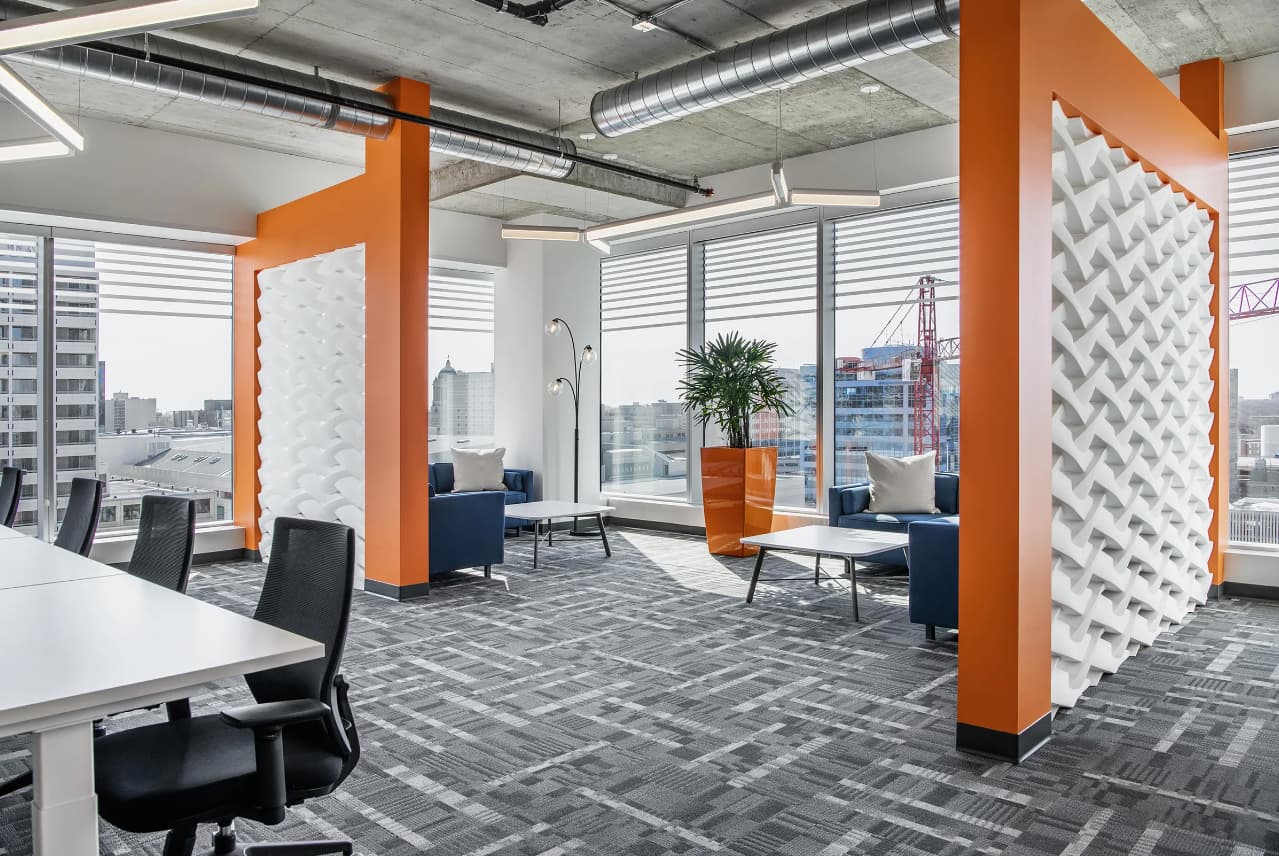In late 2015, when professional services firm Deloitte unveiled its impressive new headquarters in Toronto, it looked quite different from the traditional work environment you might expect. For starters, it had no offices or permanently assigned desks for the 3,500 employees who work there. Even the managing general partner in Toronto had to give up his customary corner suite.
 What caused this shift in their work environment? Well, Deloitte is trying out an increasingly popular office design trend that is gaining momentum in the business world called hot desking.
What caused this shift in their work environment? Well, Deloitte is trying out an increasingly popular office design trend that is gaining momentum in the business world called hot desking.
The term hot desking is thought to be derived from a naval practice called hot racking, where sailors working on different shifts share the same bunks. The concept takes advantage of the fact that a large percentage of a firm’s workforce is not in the office on a given day.
A 2013 study by CBRE, a real estate firm, found 30% of U.S. offices are vacant on average, meaning companies are paying large amounts of money each year for effectively wasted space.
Beyond better space efficiencies, hot desking can increase employee collaboration and productivity.
By putting workers in close proximity with people who might not be on the same team or department, it encourages the spread of colloboration, feedback and ideas, and of a wider, less department-focused company culture. Hot desking also ties into the trend of shrinking office sizes. In 1970, the average amount of space per employee was a relatively luxurious 500 – 750 square feet. By 2017, it’s expected to be down to less than 150 square feet. Hot desking allows you to have more people per square foot.
Technology is also helping boost the hot desking trend. Many employees now have powerful laptops and mobile phones that takes away the need for a desk with a computer and landline and allows them to work from just about any space.
Pros and Cons of Hot desking
For some businesses, hot desking can have great advantages, but there are also downsides to be aware of and it’s no secret that this method is not loved by everybody.
Pros
Flexibility – Hot desking can be amazing in providing flexibility for a business because it can open up a whole new realm of options. If you have employees that work from home on a certain day or work in a different office, this space can be opened up to someone else rather than sitting there unattended. If a small business can employ this type of system, it could provide the difference between success and failure because all the space is being utilized and the business can run more efficiently. In terms of providing flexibility, it just seems to make sense.
Collaboration – Employees not getting along is one thing, but when a business doesn’t even give employees a chance to get to know each other, this is criminal. With hot desking, businesses can spend less on company outings for employees as they will have a better chance in the office. The more employees feel comfortable around one another, the more they will collaborate when it comes to work and communication will greatly improve.
Save Money – Ultimately, if it is done right money can be saved which can be vital for a business of any size. If money is saved, this can lead to an increase in investment which can propel the company forwards. For example, if money is saved it can be invested in new equipment and technology which could lead to even more savings and the process can breed off itself. Technology and equipment is essential to hot desking, and so this investment in high-quality phones, computers, and laptops can be the difference.
Cons
Health & Safety – One of the benefits of having your own desk is that you can adjust the chair, keyboard, and desk to however you like it. Furthermore, you know that you aren’t at risk of picking up any sort of virus because it is your computer, your mouse, your keyboard, and your phone. However, if a system suggests that all these pieces of equipment can be shared all of this goes down the drain. The wrong type of chair can lead to injury, mixing germs on the phone can lead to illness, and more. Could the money gained by utilizing office space be lost when employees are taking more time off ill or injured? All these factors can be detrimental and sometimes, it can cost more to run this type of office design.
No Personalisation – Employees need to feel as though they are going to their ‘second home’ rather than to work and so one of the most popular ways of doing this is to personalize the desk. If workers can’t put up pictures of their family or organize their drawers in a certain way, that ‘homey’ feeling will be lost. In a big organization, this can be costly because employees can already feel like ‘one of the crowd’ and the desk helps to find their place in the company.
Loss of Motivation – Another risk that has to be weighed is the decrease in employee motivation; if they don’t have their own desk, they may not feel valued by the company, and this can have an impact on the quality of work being produced.
Summary
When it comes down to it, many of the problems that hot desking can cause will not occur if it is introduced properly and carefully. As long as you consult employees and ask for their feedback, many of the problems can be avoided. If you are thinking of making the change, be sure to consider if it would work all year round, if you can afford the initial outlay, and whether it would benefit your business.
Whether hot desking is here to stay or not remains to be seen, but it looks as though some of the biggest companies are giving it a go no matter what; could we be seeing the future of office design?


.jpg)
.jpg)
.jpg)